Christmas Morning at Bear River Migratory Bird Refuge was nothing short of spectacular. We had great light, wonderfully clear blue skies and lots of birds. And it was cold – as low as 6 degrees F. Perfect!
On this trip (which included the Promontory Point area) we saw a plethora of raptors – Bald and Golden Eagles, Red-tailed Hawks, Rough-legged Hawks, American Kestrels, Short-eared Owls, a Prairie Falcon and one Barn Owl hunting in daylight because of the cold.
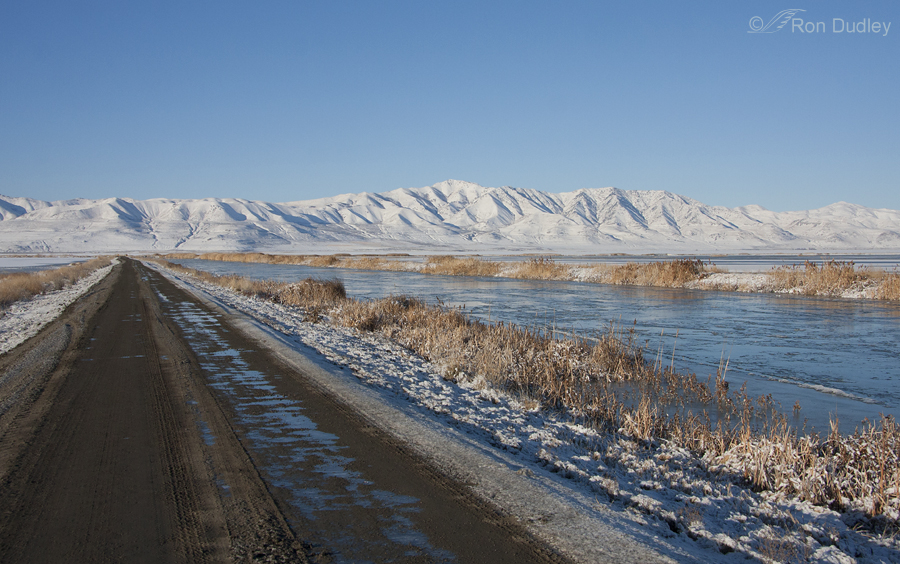
And I’ve never seen as many Great Blue Herons in one relatively small area as I did on that morning. Just before I stopped to take this photo there were over 100 of them on the ice of the canal to the right and along the far bank in less than 1/3 mile – which led to a topic of conversation. Mia is from Florida and we discussed how seeing Great Blue Herons on snow and ice seems incongruous to many folks from warmer climates. That conversation was the inspiration for this post.
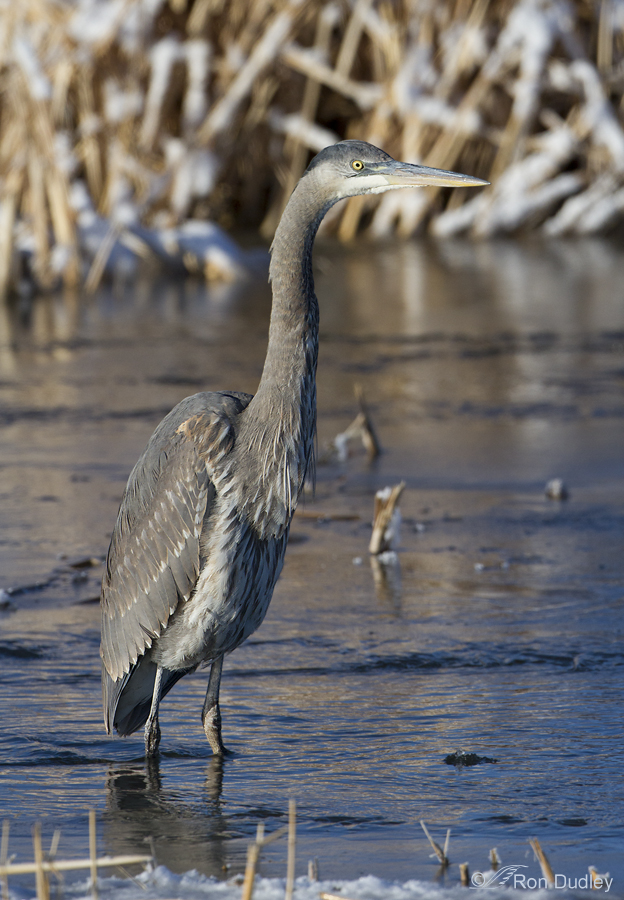
1/4000, f/6.3, ISO 400, 500 f/4, natural light
As is typical for western herons, these birds were difficult to approach (in some areas like Florida one can almost walk up and touch them at times). This juvenile was fishing in a patch of flowing water surrounded by ice and snow.
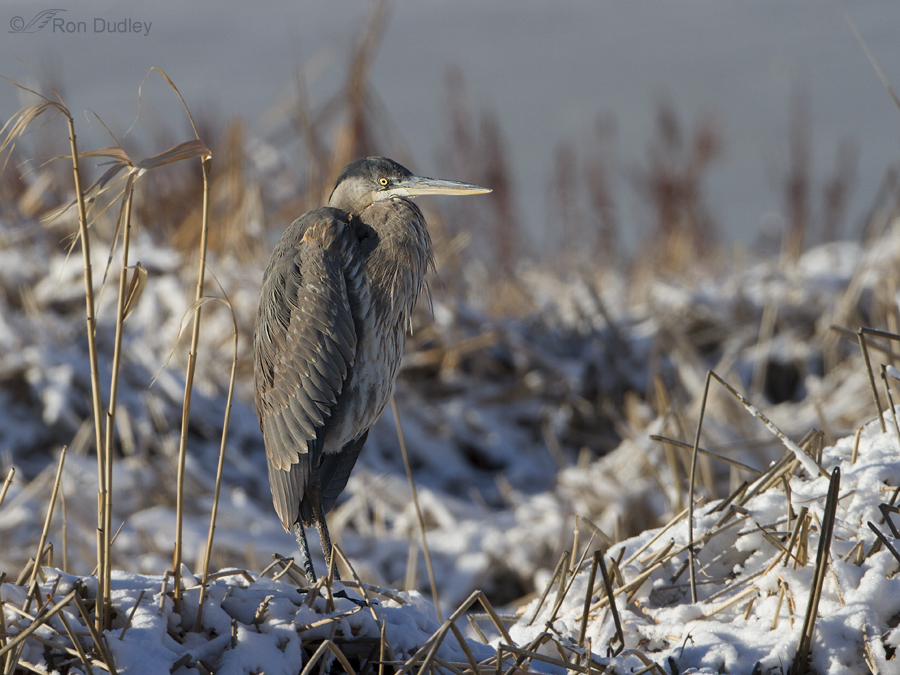
1/2500, f/6.3, ISO 400, 500 f/4, natural light
Then the same bird flew off and then came back to land within a few feet of where it had been fishing – almost like it was reluctant to leave a productive fishing spot.
The rest of the images in this post are older shots that show the conditions these birds actually deal with during winter around here.
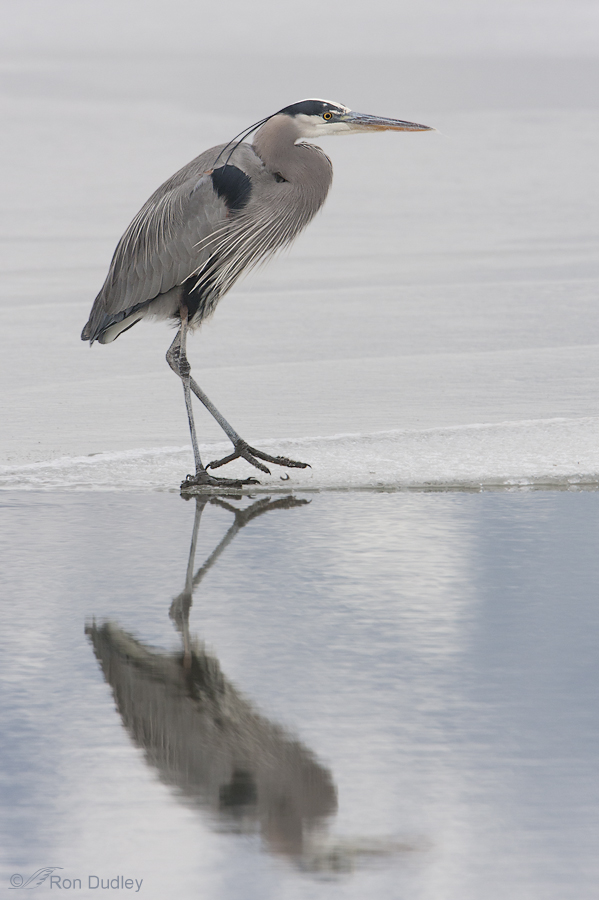
1/400, f/9, ISO 500, 500 f/4, 1.4 tc, natural light
Often ice covers most of the big ponds, with open areas wherever the water’s flowing a little. When that happens the herons sometimes fish from the ice edges.
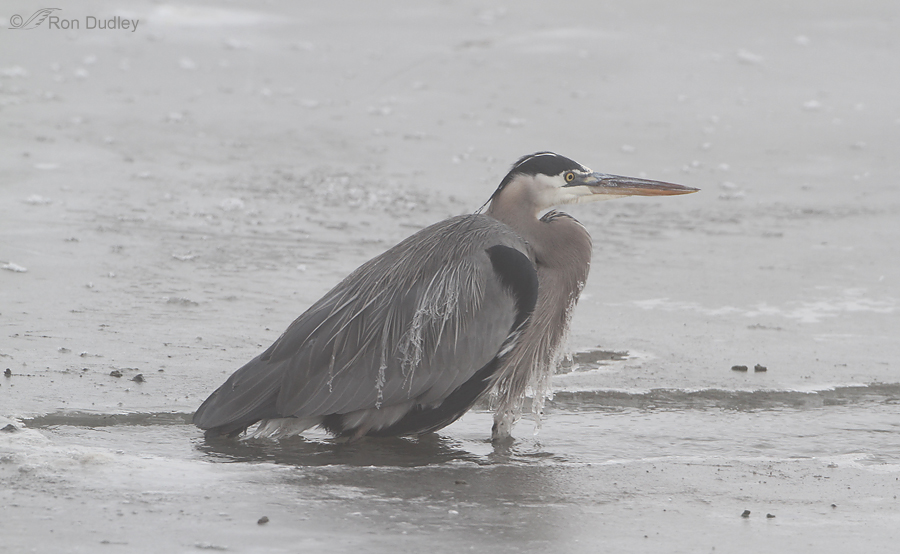
1/640, f/6.3, ISO 160, 500 f/4, natural light
When it’s colder there’s normally only small areas of open water near the bridges where the water is flowing fastest. On this day this was just about the last spot that wasn’t frozen and this heron staked out its fishing spot. It was cloudy with some fog and very cold. You can see ice hanging off the feathers of the bird’s breast.
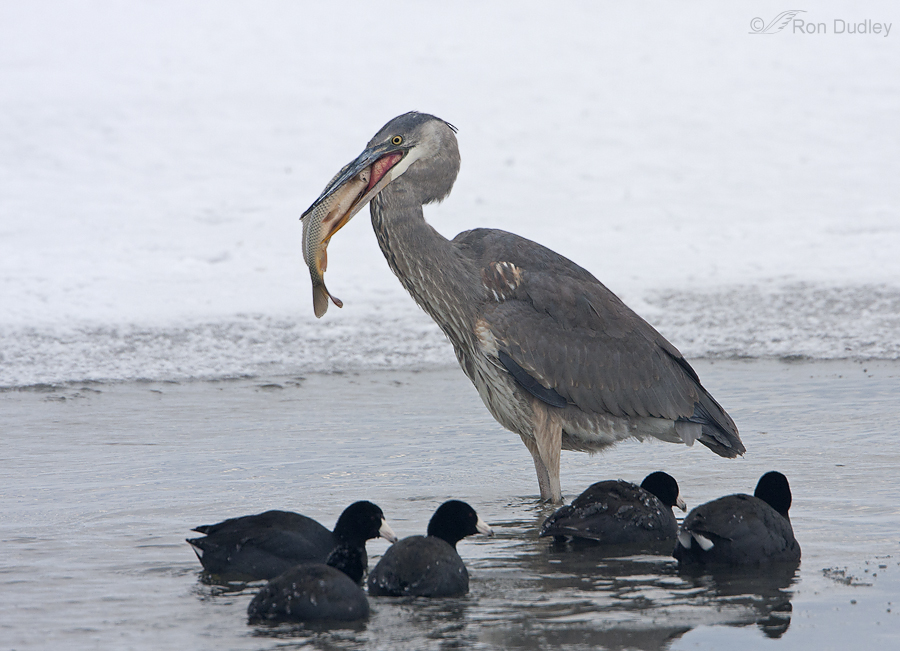
1/1000, f/8, ISO 500, 500 f/4, 1.4 tc, natural light
The fishing can be good in these small open areas. As you can see, other birds congregate there too.
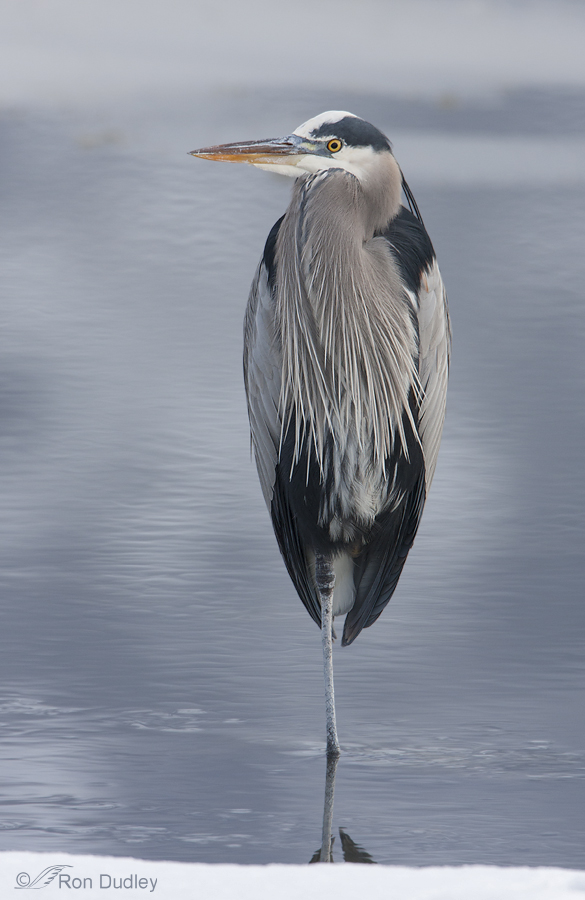
1/400, f/8, ISO 500, 500 f/4, 1.4 tc, natural light
Warmer days bring a respite on the ice. Here the sun has opened up a larger patch of water and the heron seems to be enjoying the relative warmth. Notice the snow in the foreground and ice behind the bird.
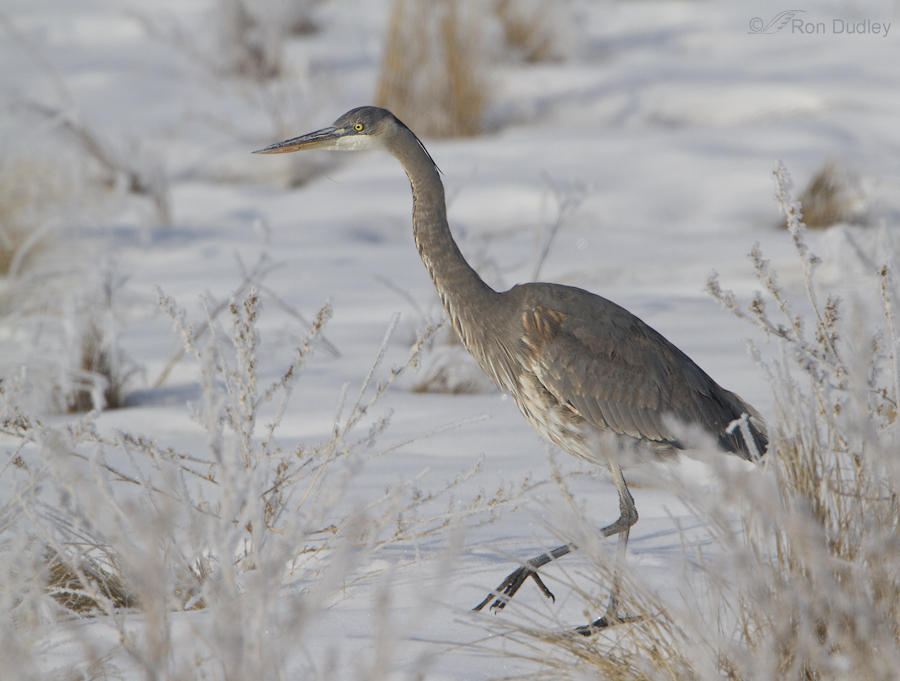
1/4000, f/7.1, ISO 400, 500 f/4, 1.4 tc, natural light
On the most frigid days there’s nothing but ice and snow with no open water. Then the herons change their tactics and go hunting for voles, which is precisely what this bird is doing. They’re very good at it too. They seem to stab the voles with their pointed beak rather than grasping them because it’s a very bloody affair.
I thought that some of you “southerners” might be interested in seeing how our herons cope in the cold. They seem not to mind too much because many of them remain here year round.
Ron
Note: You may have noticed that my site has been down for much of the morning. Network Solutions is having DOS (Denial of Service) attacks from spammers so many sites have been down. I hope the issue has been solved…


Amazing photos and info. I knew they ate frogs and fish, but voles…..I love learning stuff like this! Thanks again!
You’ve done it again Ron!!! SUPER PHOTOS!!!! Thanks for making our lives better, every day… Mia too!!! Happy New Year!!! xoxo
I’ve looked a the range maps in my guide books, but somehow never really imagined how odd it would look to me to see herons in the snow and ice. These images are so striking and your post is fabulous as always! Thank you.
Excellent heron photos!! GBHE is my favorite bird. I’ve never been able to get any good shots of them. I especially love the shot with the frozen feathers. So cool.
That surprises me a little, Bryce. I figured your favorite bird would be a raptor. Just goes to show – never make assumptions…
Another incredible illustration of things I will probably never see. Thank you so much. And the scenery was incredible as well. I wonder whether the Blue Herons have always been happy to stay in the colder climates or whether it is an adaptation brought about by increased competition for food in the warmer areas.
Elephant’s Child, as far as I know these birds have “always” lived here year-round, though we’re at about at the northern edge of that range. The herons further north of here are migratory.
These heron images are very impressive, I lived in Florida and never visualized these birds in such cold regions. More impressive is that they remain there all year around. This really confirms them as very successful hunters, everywhere they go.
Maria, yes, the GBH is hardier and more adaptable than many folks know.
Thank you for this excellent post. I am one of those Southerners who shoots Herons of all kinds, Pelicans (Brown and White), Spoonbills, etc., in the Corpus Christi, TX, and surrounding area. Our GB Herons are generally shy, as well, though there are often individuals who will pose forever as long as one doesn’t get too close. I shoot with a 70-200 L lens, because I like to get closer to the bird, and I especially like their being aware of me and my camera. These images are very nice, and I was quite amazed to see GB Herons with iced feathers, walking around in icy slush, etc. Have thought of them solely as tropical burds. Thanks much.
Thanks, Lane. I’d love to have access to some of the species you see down there.